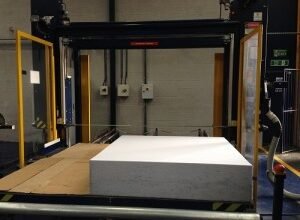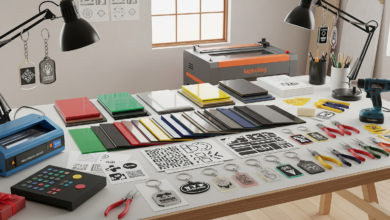Valve Marking Machine: Enhancing Precision and Efficiency in Valve Identification

Introduction
In the world of industrial manufacturing, the importance of proper identification and traceability of parts cannot be overstated. These components need to be clearly marked with essential details such as part numbers, specifications, material grades, and other important identifiers. To meet this demand for accurate and durable markings, valve marking machines have become indispensable tools in various industries.
What is a Valve Marking Machine?
A valve marking machine is a specialized device used to mark valves with critical information such as serial numbers, part numbers, material specifications, pressure ratings, and inspection dates. These markings ensure that each valve can be easily identified and traced throughout its lifecycle, from manufacturing to installation and maintenance.
Each of these technologies serves the purpose of creating clear, permanent, and readable markings on the valve’s surface.
Why Valve Marking is Important
The need for valve marking arises from several important factors, including:
1. Traceability and Accountability
By marking valves with unique identifiers, manufacturers and operators can track their origin, material properties, and maintenance history. This traceability ensures that any issues with a valve can be easily traced back to the source, helping to prevent problems and ensure the integrity of the system.
2. Regulatory Compliance
Many industries are required to adhere to strict regulatory standards that ensure safety, performance, and quality. Marking valves with specific details helps companies meet these standards by clearly identifying the valve’s specifications, material certification, pressure rating, and other compliance-related information.
Read also: Indexed Universal Life Policy: Combining Security with Growth
3. Maintenance and Inspection
Over the course of a valve’s lifespan, it may undergo several inspections, repairs, or replacements. Having clear, permanent markings allows maintenance personnel to identify the valve’s model, material type, and previous inspection or maintenance history.
4. Operational Safety
In many industries, valves control the flow of hazardous fluids or gases. Ensuring that valves are correctly marked with pressure ratings, material specifications, and other critical information reduces the risk of accidents and system failures.
designs, logos, text, or barcodes, making them suitable for a wide range of valve marking applications.
Benefits of Laser Marking:
- Precision: Laser marking produces sharp, detailed, and highly accurate markings, even on small or complex surfaces.
- Durability: The markings are permanent and can withstand harsh industrial environments.
- Non-contact: Laser marking is a non-contact process, which means there is no risk of damaging the valve during the marking process.
- Customization: It allows for the customization of markings with logos, serial numbers, and other personalized information.
2. Dot Peen Marking Machines
The dots are etched into the valve’s surface, creating a permanent, readable mark that is resistant to wear and corrosion.
Benefits of Dot Peen Marking:
- Cost-Effective: Dot peen marking machines are generally more affordable than laser marking machines, making them a good option for high-volume applications.
- Speed: Dot peen marking is a relatively fast process, allowing for efficient marking in large production runs.
- Durability: The markings created by dot peen machines are deep and long-lasting, making them suitable for valves that will be exposed to harsh conditions.
3. Mechanical Engraving Machines
Mechanical engraving machines use a rotary cutting tool to physically carve markings onto the valve’s surface. The tool cuts into the material, creating a permanent mark that is deep enough to withstand wear and environmental exposure.
Benefits of Mechanical Engraving:
- Long-Lasting Markings: Mechanical engraving creates deep, permanent marks that are highly resistant to wear, abrasion, and corrosion.
- Suitable for Hard Materials: Mechanical engraving is well-suited for hard materials like steel, stainless steel, and other tough alloys.
- Precision: The engraving process allows for detailed and accurate markings on the valve surface.
valve marking machine typically involves the following steps:
- Preparation: The valve is placed into the machine, ensuring it is securely held in place. In some cases, the valve may need to be cleaned to remove dirt, oils, or coatings that could interfere with the marking process.
- Setting Parameters: The operator selects the marking parameters, including the text, symbols, or design to be engraved, the depth of the marking, and the position on the valve.
- Marking Process: The machine then begins the marking process, whether through laser engraving, dot peen marking, or mechanical engraving. The marking machine will create a precise, permanent mark on the valve’s surface.
- Quality Control: After the marking is complete, the valve undergoes inspection to ensure that the marking is clear, readable, and meets all required specifications.
Conclusion
Valve marking machines play a crucial role in enhancing traceability, safety, and compliance in industries that rely on valves for their operations. Whether through laser engraving, dot peen marking, or mechanical engraving, these machines provide precise, permanent markings that help ensure the integrity and reliability of valves. As industries continue to demand higher standards of quality control, valve marking machines will remain an indispensable tool in maintaining operational efficiency and safety.





